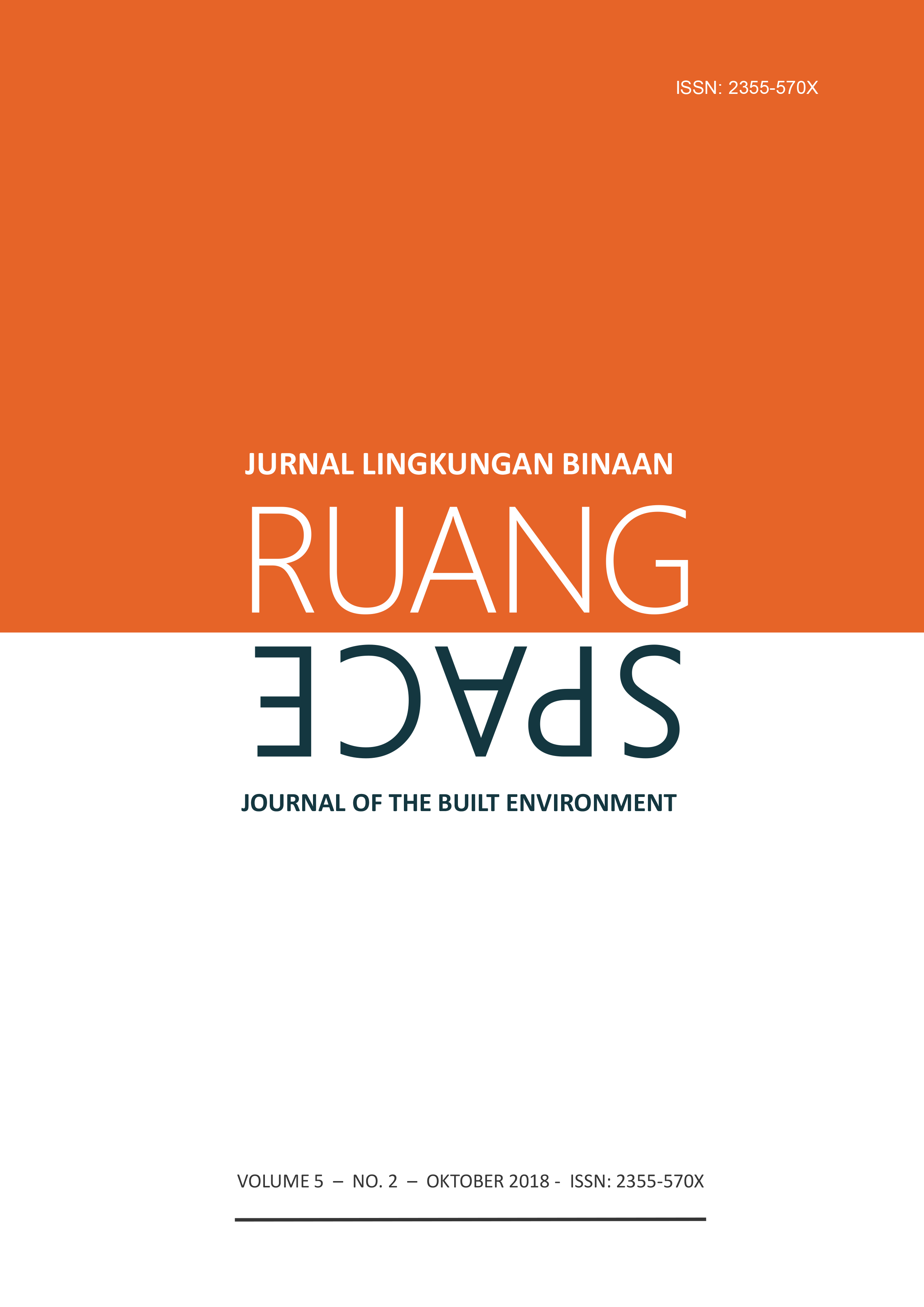Transformasi Permukiman Bali Aga di Desa Pakraman Timbrah Kabupaten Karangasem
Abstract
This article studies the transformation of homes of Timbrah Settlement, a Bali Aga Community of Karangasem Regency. It focusses on two fundamental elements, namely spatial formation and built forms which are, by tradition, two unique features characterizing the built environment of Timbrah. These spatial elements symbolize complex socio-cultural systems of belief, subsistence, gender, knowledge, defend, time, territoriality, etc. In its development, the community has to inevitably interrelate with various congencies brought in by modernity - taking place globally, and other forces driven from within. Some observed consequences brought by these influences include (not limited to) modifications in value systems, way of people live their life, and demographic formations. This observation has constituted an inspiration to the conduct of this whole study, in which qualitative approaches were put into practice. Study findings demonstrate that almost all Timbrah homes (karang paumahan) have been transformed in one way or another. This condition is mainly due to a need for more living space, efficiency in spatial utilization, social status, self actualization, and to accommodate changes of inhabitants' lifestyle. The transformation of Timbrah homes has been carried out in a gradual manner, directed by a conscious understanding to maintain local knowledge and values, especially of those associated with the governance of space exist in both domestic and communal spheres. In consequence, attempts to keep Timbrah's identity as a unique Bali Aga community have been indirectly imposed on, at any given opportunity.
Kata kunci: spatial formation, traditional settlement, narrow lane, bale agung, Timbrah Community
Downloads
The copyright of the received article shall be assigned to the journal as the publisher of the journal. The intended copyright includes the right to publish the article in various forms (including reprints). The journal maintains the publishing rights to the published articles.



